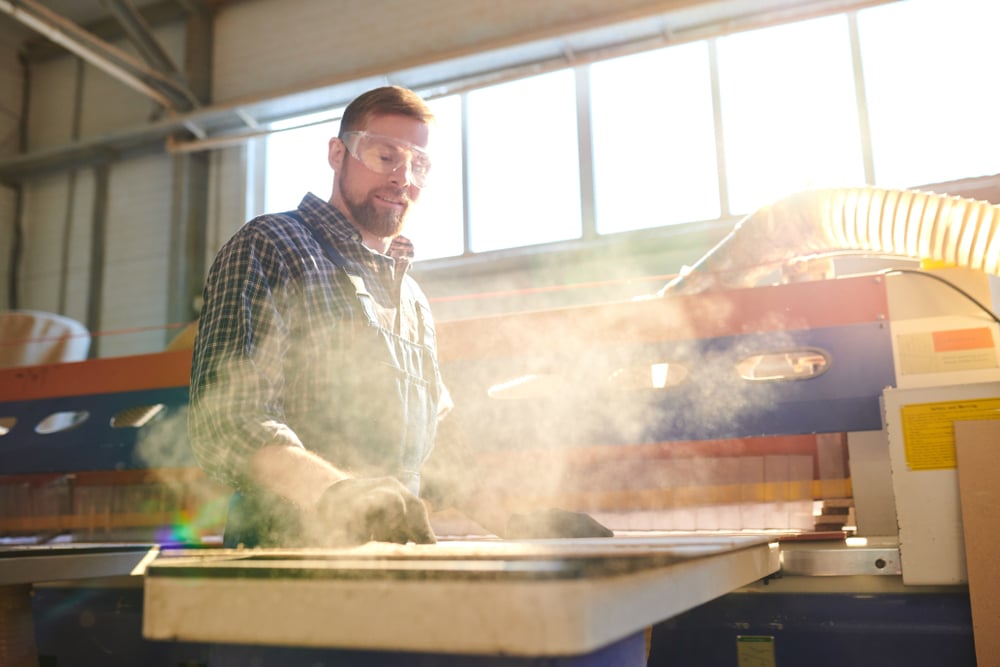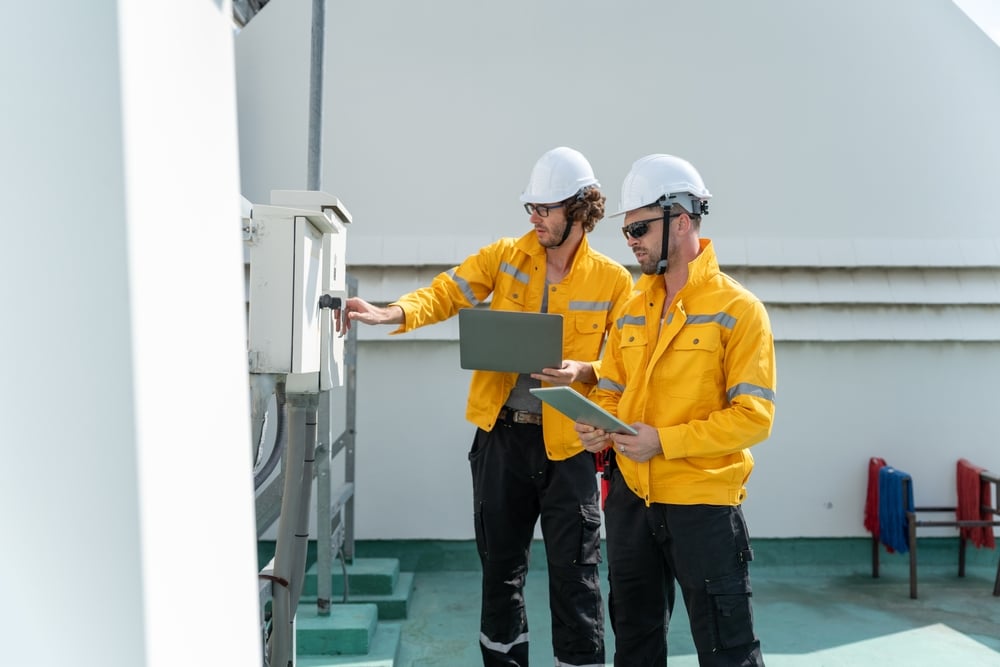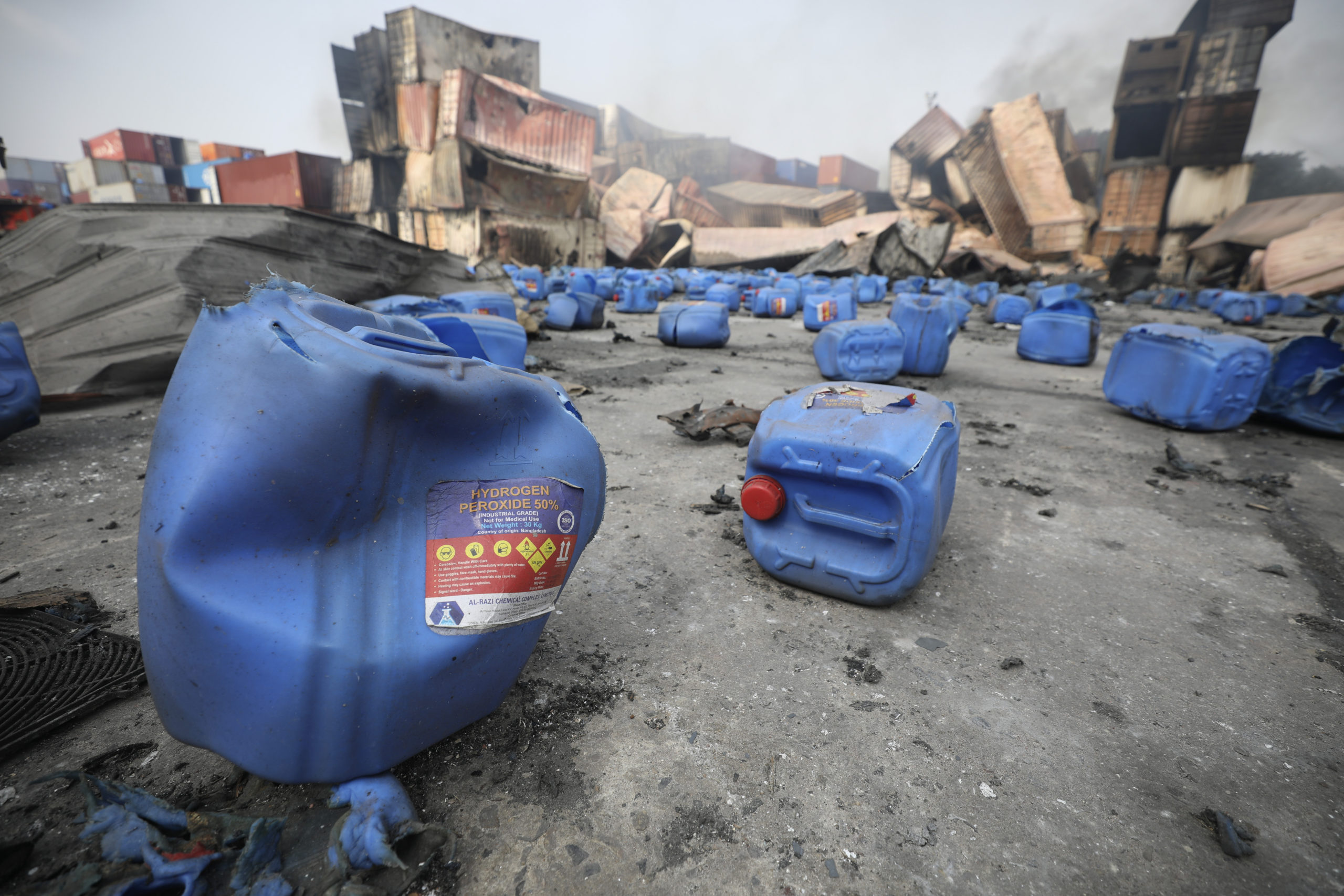Search
Dust Explosions Misunderstandings: Let’s Clear the Air!

Dust explosion risks are among the most easily overlooked in industry; they often go unnoticed until tragedy strikes. Despite their destructive potential, the science behind dust explosions remains misunderstood leading to a lack of preparedness and unnecessary risk. Many businesses across industries, from food production to agrochemicals, handle combustible dust daily without fully grasping the hazards.
In this article, our process safety consultants tackle a few of the common misconceptions about dust explosions they’ve encountered over the years – and explain the science behind them – in straightforward (human) terms! Our goal is to help you recognize the risk of dust explosion; and to develop effective safety strategies that prevent incidents.
In this article, we address the following common misconceptions:
- My powder is not fine enough to explode
- Dust explosions are only a risk in large, dusty factories
- If I don’t see a visible dust cloud, I don’t have a problem
- Only organic dusts will explode
- Any ignition sources can ignite a combustible dust cloud
- Once I’ve completed a Dust Hazards Analysis (DHA) my plant will be safe
- If my plant is fitted with explosion protection, I can handle any of my powders in it
- Combustibility testing is a one-time task
Misconception 1: “My powder is not fine enough to explode”
The reality: It’s easy to assume that the powder or dust you handle is too coarse or too large to present a dust explosion hazard. However, what is often overlooked is that processing, handling, and transporting of powders can significantly change particle size distribution, generating fine, explosible dust that will be easier to ignite and explode with a greater severity.
Explained: During processes such as cutting, grinding/milling, mixing/blending, and conveying, materials that start out as coarse particles can break up to form dust fines. These fine particles can then become more readily suspended in the air, creating the perfect conditions for an explosion – if there’s a high enough concentration of dust, and a sufficiently energetic ignition source. So seemingly safe granules or pellets that will not ‘explode’ when tested, can become hazardous once they are processed and thus introduce a risk of dust explosion.
Example: In the United States, a tragic sugar refinery explosion in 2008 serves to illustrate this misconception. While sugar in its granular form isn’t typically thought of as explosive (sugar granules from a pack of sugar in your kitchen will not become readily airborne), industrial scale handling and processing operations create fine sugar particles that can settle throughout production facilities. When disturbed, these fine particles can become airborne and create an explosible dust cloud. In the presence of an energetic ignition source, an explosion will ensue. 14 workers died in the sugar refinery explosion referenced – and caused widespread destruction of plant.
Our Insight: At Stonehouse Process Safety, we recognize the importance of assessing not just the material you handle, but how your processes might generate fine particles at different locations. Our ISO/IEC 17025:2017 accredited laboratories can test dust samples to determine whether the dust generated during processing poses an explosion risk, helping you implement the right safety measures. Some of the test protocols we follow allow for particle size selection and permit us to interpret results for your specific processing operations.
Misconception 2: “Dust explosions are only a risk in large, dusty factories”
The reality: Dust explosions can happen anywhere dust is produced, even in small, seemingly clean facilities. The size of the operation doesn’t matter – what matters is whether an explosible dust cloud can be formed and whether a sufficiently energetic ignition source can manifest at the same time in that location.
Explained: It doesn’t take much dust to give rise to and sustain an explosion. Even a small, localized dust cloud (for example in a drum filling operation) can result in an explosion if it reaches the right concentration, and a sufficiently energetic ignition source is present. In many cases, there might be a small primary flashfire first, but this could disturb more dust in the facility, creating a much larger secondary explosion. Most dusts have a Minimum Explosible Concentration (MEC) in a range of few 10’s of grams/cubic meter to few 100’s of grams per cubic meter. Not much!
Example: In 2003, a dust explosion in a small pharmaceutical device manufacturing plant in North Carolina resulted in six fatalities. The facility wasn’t particularly large, but dust from the process that had built up on top of the drop-ceiling tiles over time was released, dispersed, and ignited, causing a catastrophic explosion.
Our Insight: At Stonehouse, we help facilities of all sizes identify hidden dust explosion risks. Our specialist consultants examine facilities to advise on dust explosion risk, regardless of how small or localized the dust cloud may seem.
Misconception 3: “If I don’t see a visible dust cloud, I don’t have a problem”
The reality: While it is reasonable to state that for a dust cloud to be explosible, it is likely to appear as a ‘dense fog’, it should be noted that dispersed dusts will not be of uniform density, and in any case, visible dust clouds are not the only danger. Combustible dust often exists in layers or small amounts that may not be obvious until they are disturbed.
Explained: Dust can accumulate on hard-to-reach surfaces such as rafters, ductwork, or on machinery and equipment. Even if there is no visible dust cloud, these layers can become airborne when disturbed by air currents, or vibrations from equipment. Once airborne, they can form an explosible mixture that is set for ignition. An explosion inside unprotected equipment will often raise dust collected outside of equipment and subsequent secondary explosions can be even more destructive than the primary event.
Example: In 2017, an explosion in a food-processing plant in Wisconsin was caused by fine corn dust during dry milling. Fugitive dust that had escaped the process was dispersed into the air by a primary explosion inside the process equipment proceeded to create secondary explosion(s) that contributed to the destruction of the plant.
Our Insight: We emphasize the importance of thorough inspections and maintenance of equipment and propose effective housekeeping protocols to prevent hazardous levels of dust from accumulating in unseen and out of reach areas. Regular housekeeping combined with dust hazards analysis (DHA) can significantly reduce the chance of a hidden dust layer turning into a disaster. Your Dust Hazards Analysis (DHA) as mandated by NFPA 652, forms the basis on which dust explosion precautions are based.
Misconception 4: “Only organic dusts will explode”
The reality: Combustible dusts aren’t limited to organic materials like wood, flour or coal. There are inorganic materials that can be highly explosive when in dust cloud form, even though they don’t burn easily when formed into component parts, for example.
Explained: Some inorganic materials such as many metals can pose a serious dust explosion risk. When these materials are ground into fine particles, dispersed in air, and exposed to a sufficiently energetic ignition source, they can rapidly oxidize, leading to easier ignitability and stronger explosion pressures.
Example: In 2014, a metal dust explosion in a Chinese automotive parts factory killed 146 workers. The explosion involved dispersed aluminum dust – a material not normally thought of as hazardous when formed into automotive components, but one which becomes highly hazardous (explosive) in dust form.
Our Insight: We specialize in analyzing the specific properties of all dust – organic and inorganic. Our laboratory is capable of testing and identifying materials to establish if they are combustible and thus fall under NFPA standards for combustible dusts; thus, ensuring that all dust explosion risks can be addressed and never stay hidden.
Misconception 5: “Any ignition source can ignite a combustible dust cloud”
The reality: Not all dust clouds will explode just because there’s an ignition source present. The sensitivity of a dust cloud to ignition varies significantly depending on the type (chemical nature) of dust, particle size, moisture content, dust cloud concentration, and environmental conditions. Some dusts require only a small spark (for example a discharge of static electricity from your fingertip) to ignite, while others need a much stronger ignition source such as electrical arc, flame or very high temperatures.
Explained: Different types of dust have varying ignition sensitivities based on their chemical composition, particle size, moisture content, and other factors. For example, fine aluminum dust is highly sensitive to ignition and can explode with even a small static spark. In contrast, some types of plastic dusts may require a higher ignition energy to cause an explosion. Minimum Ignition Energy (MIE) of a dust cloud is one of a number of tests that can be performed to determine the ease of ignition of your dust cloud. Others include Minimum Auto-Ignition Temperature (MAIT) of dust cloud and selected bulk thermal stability tests, with test selection depending on potential credible ignition sources in your processes and operations. Without proper testing, you won’t know how easily your dust could ignite. Test results are used to establish if sources of ignition such as hot bearings, heated dryer surfaces, friction sparks, electrostatic sparks, and more are capable of initiating dust explosion and introducing controls accordingly.
Example: A wood-processing plant might have dust that requires a relatively high energy ignition source to explode, meaning a static discharge from an operator fingertip may not be enough. However, in a metalworking plant handling fine aluminum dust, a tiny electrostatic spark discharge or friction spark can trigger a massive explosion. Understanding the specific ignition sensitivity of your dust is crucial for determining the necessary precautions.
Our Insight: Stonehouse provides comprehensive combustible explosion testing, including determining the sensitivity of dusts to ignition by different ignition sources. Our ISO/IEC 17025:2017 accredited laboratory can assess the specific properties of your dust to ensure your safety measures are aligned with its sensitivity to ignition. Knowing the ignition sensitivity of your dust allows you to target specific hazards and reduce the risk of an explosion.
Misconception 6: “Once I’ve performed a Dust Hazards Analysis (DHA), my plant will be safe”
The reality: Often DHAs will identify some additional precautions – beyond those that might already be in place – to reduce dust explosion risk. However, even when these additional precautions are implemented, dust explosion hazards and risks are dynamic and ongoing vigilance and checks are required to keep your facility safe.
Explained: Dust can accumulate over time, equipment wears out, processes change, you source raw materials from other suppliers, and new operators and contractors replace the outgoing ones — all of which can alter the dust explosion risk. Safety systems must be continuously reviewed and updated to adapt to these changes. What worked last year may not be sufficient today. NFPA 652 addresses this point and requires revalidation of DHAs at least every 5 years, but this does not negate the need for active attention (usually specified in NFPA 652-required safety management systems) in between.
Example: In 2015, a woodworking facility experienced a dust explosion after having successfully prevented incidents for years. Over time, new equipment was installed, and cleaning protocols were relaxed, leading to unnoticed dust buildup in previously safe areas.
Our Insight: At Stonehouse, we don’t just offer one-time solutions. We provide ongoing support, helping our clients continually reassess their dust explosion risks as operations evolve. Continuous improvement is crucial to long-term safety. We offer a DHA revalidation service as well as assistance in devising and implementing Safety Management Systems to ensure intolerable dust explosion risks do not emerge between DHAs.
Misconception 7: “If my plant is fitted with explosion protection, I can handle any of my powders in it”
The reality: Not all dusts are equally combustible, and treating all types of dust the same way can lead to either inadequate or overelaborate safety measures that can make a process difficult or more expensive to operate. Different dusts have different “ignition sensitivity”, “explosion severity”, and “electrostatic” characteristics.
Explained: Dust explosibility varies widely depending on the material chemical nature, particle size, moisture content, and concentration. For example, wood dust behaves differently from metal or plastic dust. It is noteworthy that even dusts from different types of wood behave differently. Without specific testing, it won’t be possible to know the specific explosion risk posed by the dust in your facility. General safety measures may address some risks, but they may not be sufficient for more ignition sensitive or more explosive types of dust.
Example: In 2017, a woodworking facility experienced a dust explosion despite implementing general dust explosion safety precautions. A post-incident investigation revealed that the specific type of wood used had higher dust cloud combustibility than anticipated, and the facility’s safety measures didn’t account for this increased risk.
Our Insight: Stonehouse Process Safety conducts detailed dust combustibility testing in our ISO/IEC 17025:2017 accredited laboratory to identify the specific explosive potential of your dust. This allows for the provision of tailored recommendations that align with the specific risks in your facility, thus ensuring the combustible dust precautions you take are both adequate and are not overly expensive or onerous to maintain.
Misconception 8: “Combustibility Testing is a One-Time Task”
The reality: Dust combustibility testing should be a periodic process, not a one-off task. As materials, suppliers, processes, and operations change, so do the risks.
Explained: Facilities often undergo changes in materials, suppliers, processes, or equipment, all of which can affect the characteristics of the dust being generated. A dust that may have been safe previously could become unsafe under new conditions. “Ignition sensitivity” and “explosion severity” testing when there are changes to the process, operation, and raw material sources, ensures that your safety measures remain effective as your operations evolve.
Example: In 2019, a metalworking plant conducted dust explosibility testing when it first opened and found the risk to be minimal. However, after switching to a different metal alloy, an explosion occurred. The new metal dust had different explosive characteristics that had not been tested, leading to insufficient safety measures.
Our Insight: Stonehouse Process Safety offers testing services to help clients adapt to changes in their operations. Our laboratory provides testing to ensure that facilities stay on top of evolving dust risks and can update their safety measures accordingly.
Conclusion
Dust fires, flash fires, and explosions pose a significant risk across many industries, yet the science behind them is often misunderstood. By debunking these common misconceptions, we hope to shed light on the reality of combustible dust and the proactive measures businesses can take to mitigate dust fire, flash fire, and explosion risks.
At Stonehouse Process Safety, we’re dedicated to helping you understand and manage the hazards of explosible dusts. Contact us for more information on our combustible dust testing and consulting services.

Get in touch
To learn more about our expertise and services in dust explosion prevention & mitigation, call us at +1 609 455 0001 or email us at [email protected] today.
We also offer tailored virtual and in-company process safety training programs on Dust Explosions, Static Electricity and HAC (Hazardous Area Classification) and more. Find further information here.











